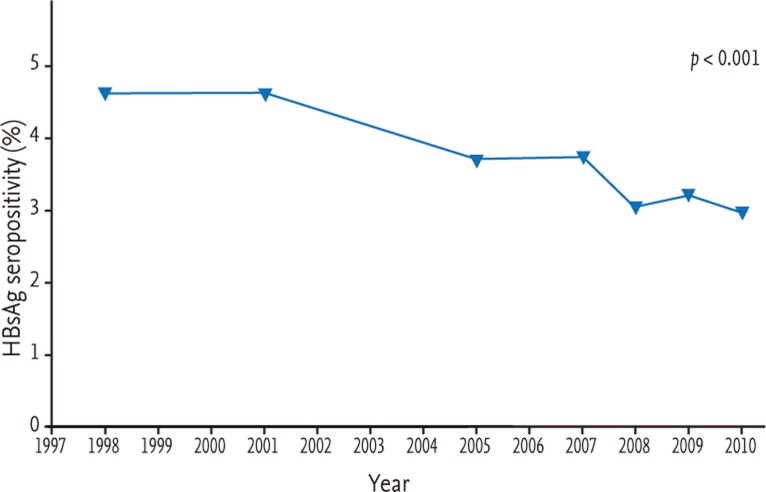Hepatitis B virus infection in South Korea: three decades after universal vaccination
Article information
See Article on Page [Related article:] 413-419
In 1992, the World Health Assembly issued a resolution that recommend universal hepatitis B vaccination in countries in which it is feasible [1]. The rationale for the recommendation was that 1) hepatitis B virus (HBV) is second only to smoking as a risk factor for cancer mortality [2], and 2) the hepatitis B vaccine is among the safest and most efficient vaccines available. Because the prevalence of HBV infection is highest in Asian countries [3], excellent reports have been issued from Taiwan [4], China [5], and Korea [6] regarding the efficacy of vaccination against HBV, not only for the prevention of new infection, but also in terms of a decrease in the incidence of hepatocellular carcinoma [4]. In South Korea, the HBV vaccine was first available in 1982 and was generated from the sera of patients. However, a decade passed until the universal vaccination program was implemented. Since then, as show by Kim et al. [7] in this issue, the prevalence of HBV infection has decreased continually (Fig. 1), which is in line with reports from neighboring countries [4,5].

Trend of hepatitis B surface antigen (HBsAg) seropositivity in South Korea during the most recent two decades.
Of note, however, is the finding that the prevalence has not decreased significantly in the population in their 50s. Several mechanisms might underlie this finding: 1) as proposed by the authors, the risk of HBV-related morbidity/mortality is relatively stable in this age group; and 2) more importantly, this population has not had the opportunity to undergo the new preventive measure (vaccination). Indeed, even if they were vaccinated, the effect would be identical to the actual situation without vaccination because new infection in patients in their thirties was relatively rare during that era, because vertical transmission predominated in Korea. In a mathematical model of vaccination and herd immunity [8], the efficacy of the HBV vaccine was less certain than that of vaccines against other infectious diseases-such as measles-because the R0 (secondary cases produced by one primary case in a susceptible population) is typically low [8]. Therefore, it is not surprising that the impact of universal vaccination differs according to age.
More recent mathematical modeling has confirmed the benefit of HBV vaccination in terms of overall HBV-related deaths [9], and older generations should be proud of the benefit of their endeavors for the younger generation.
Notes
No potential conflict of interest relevant to this article is reported.